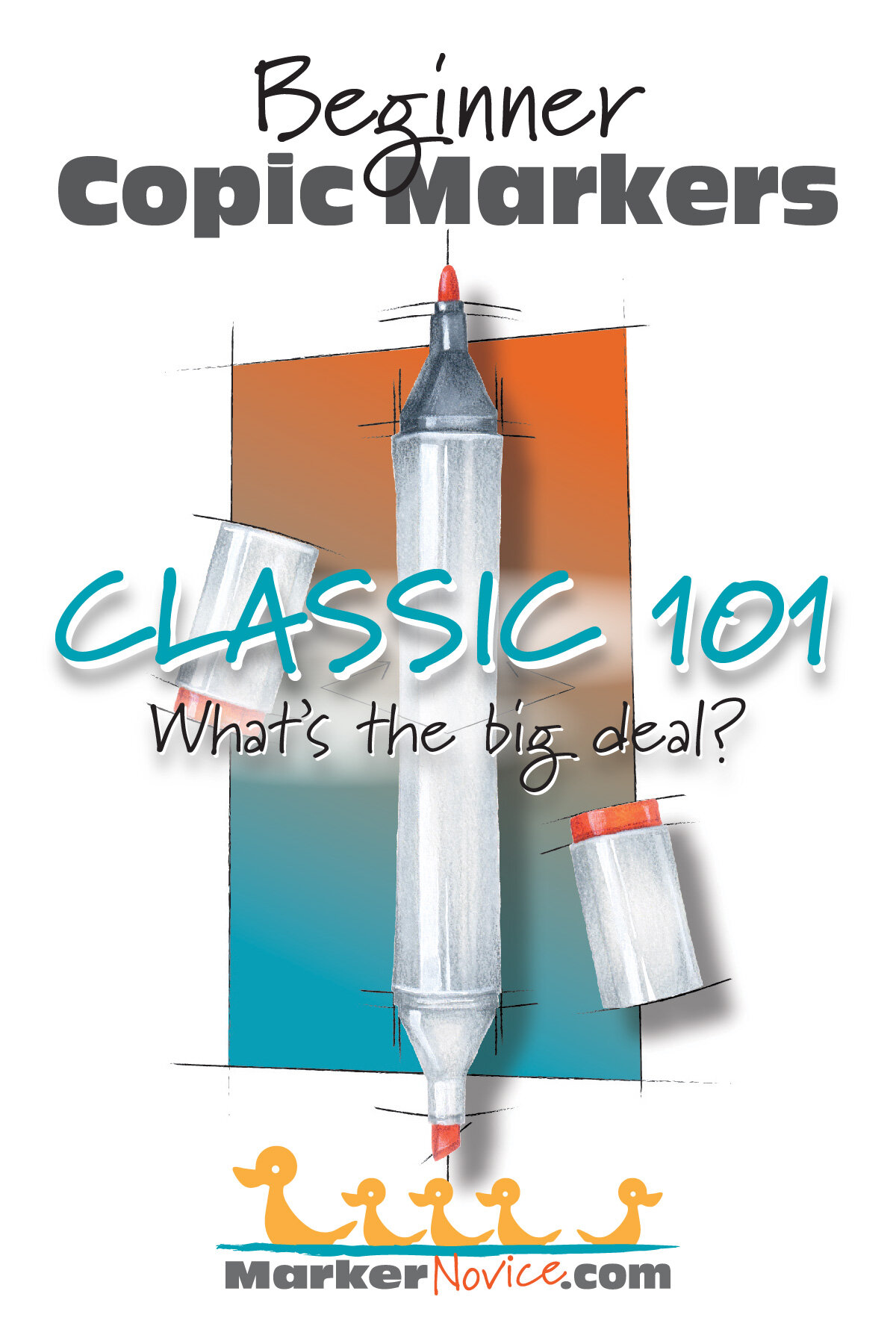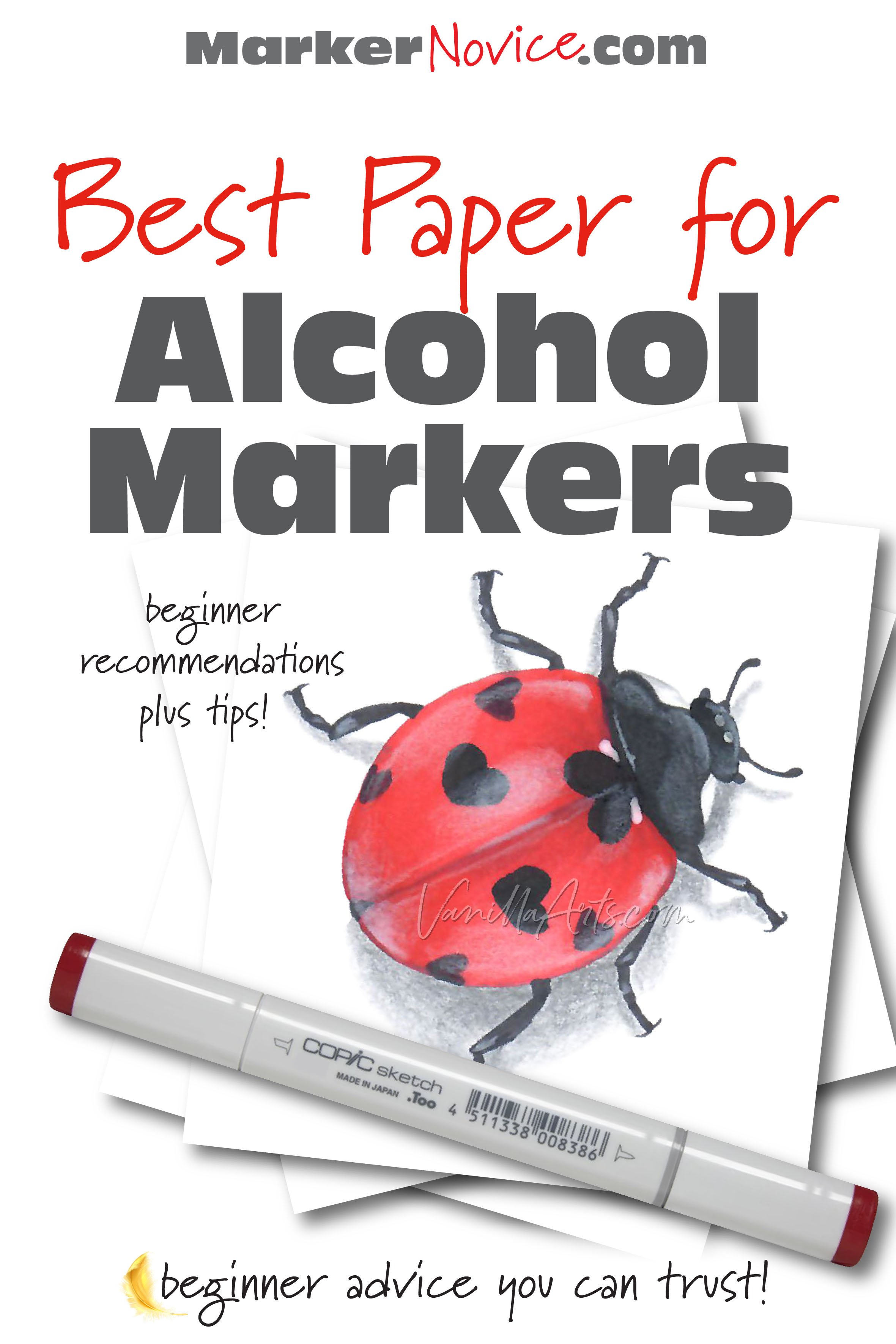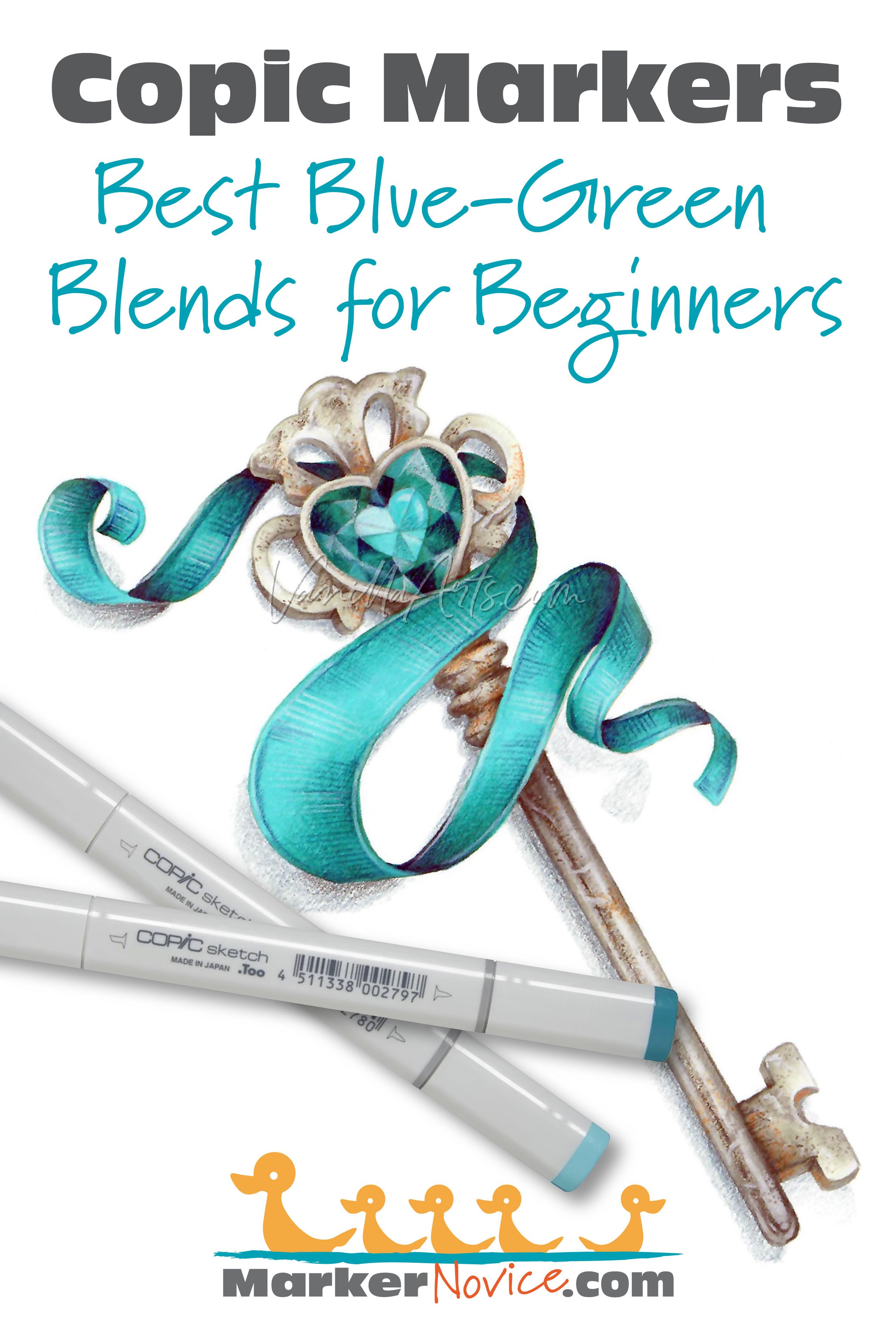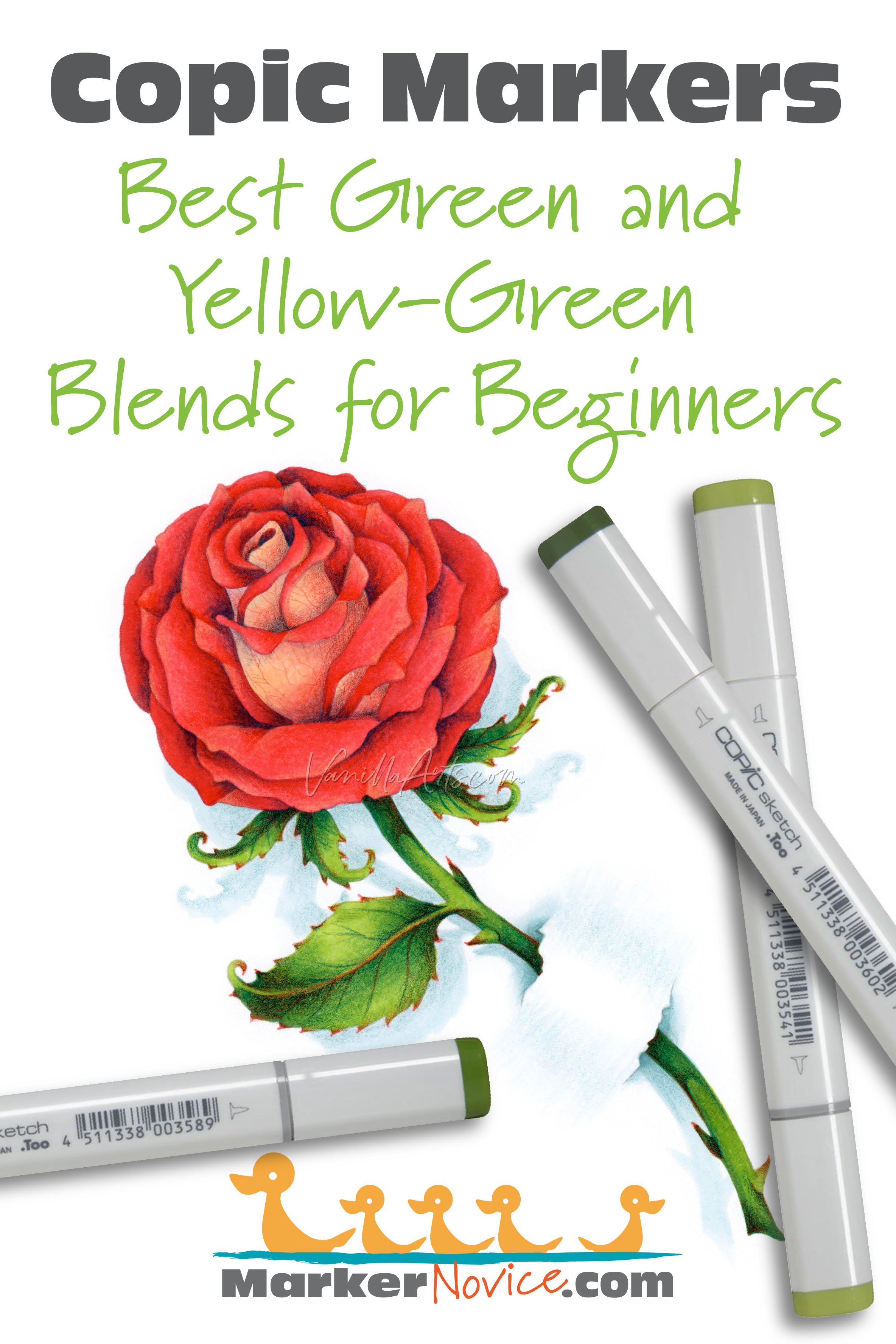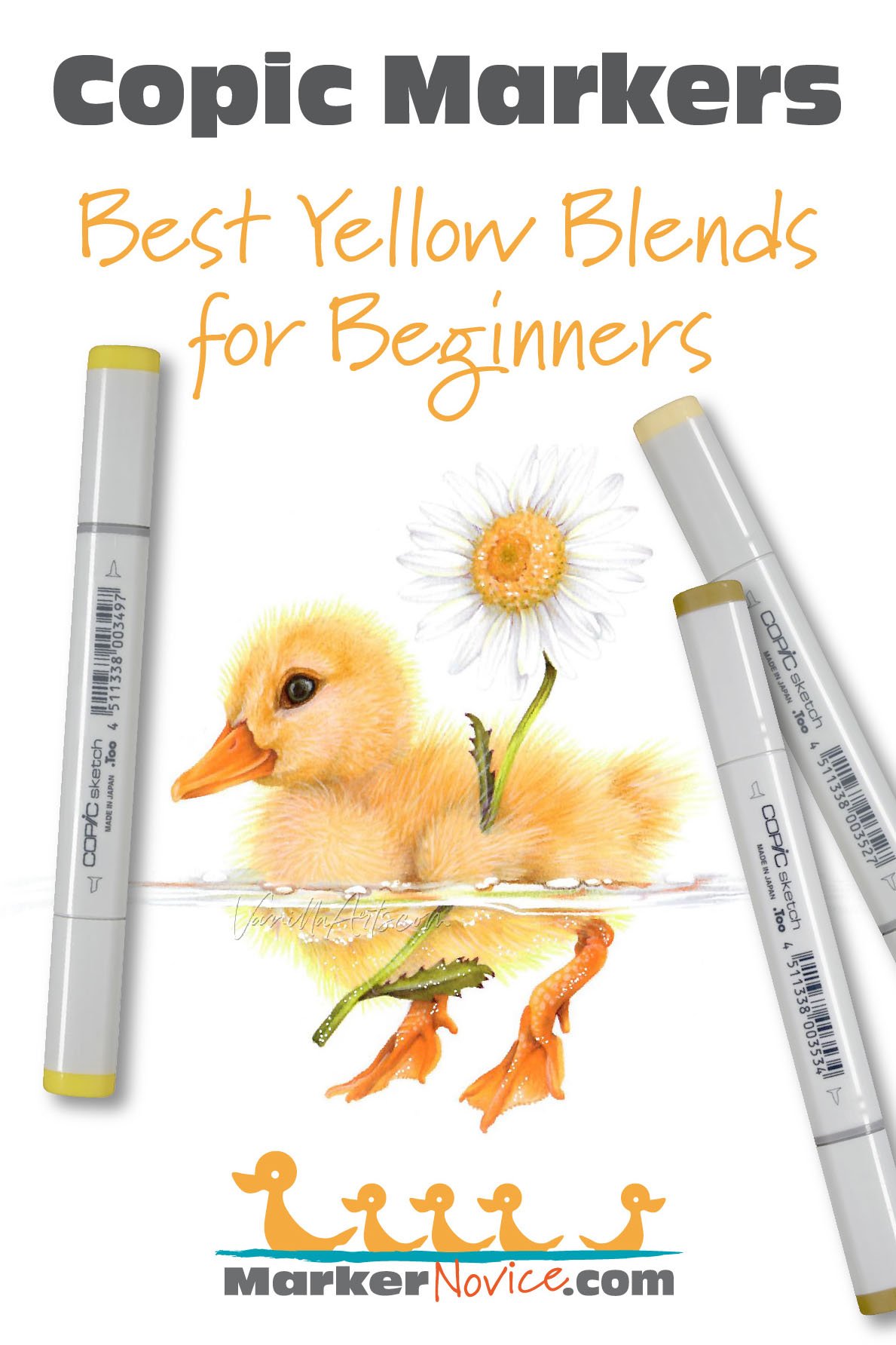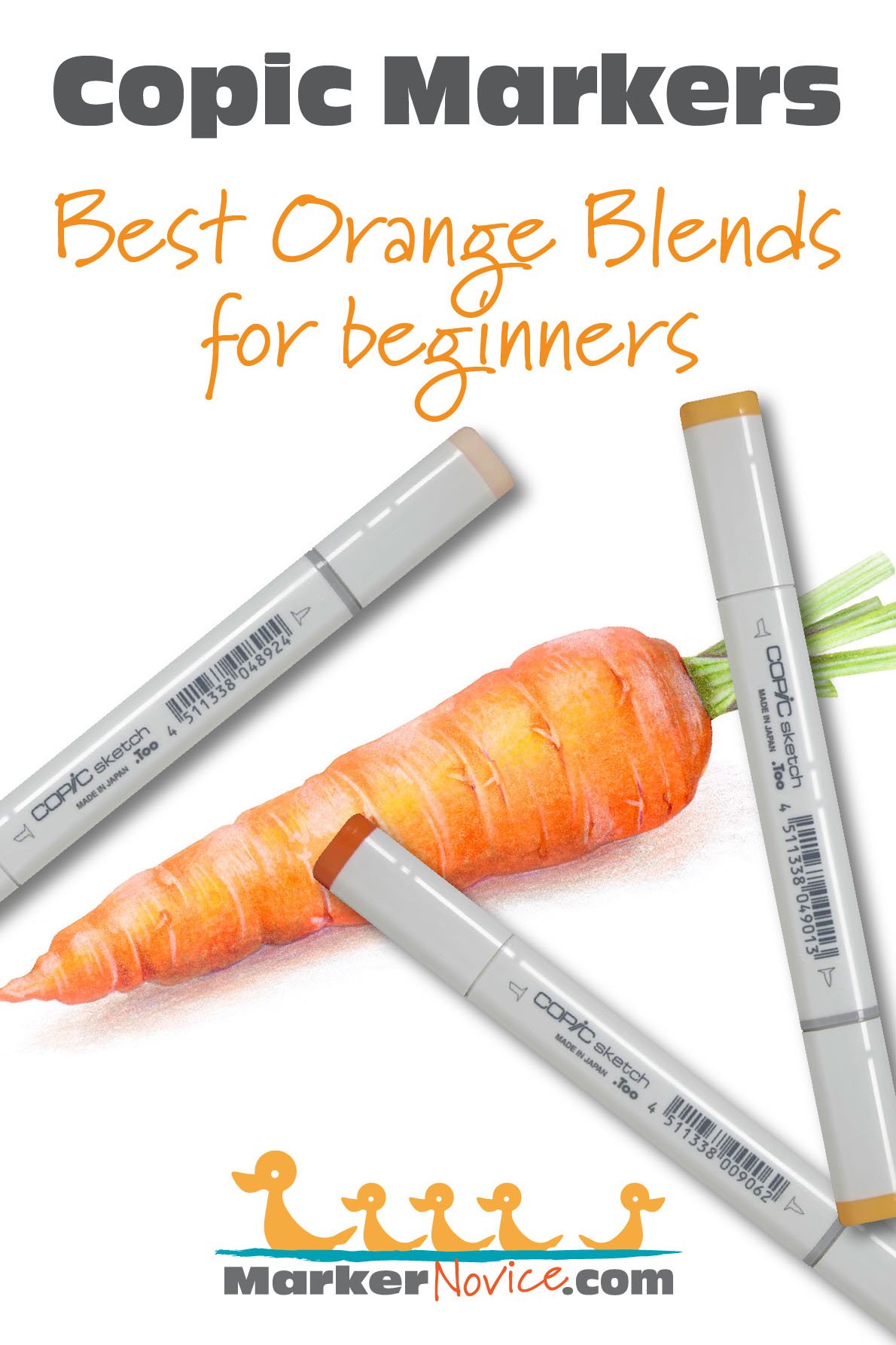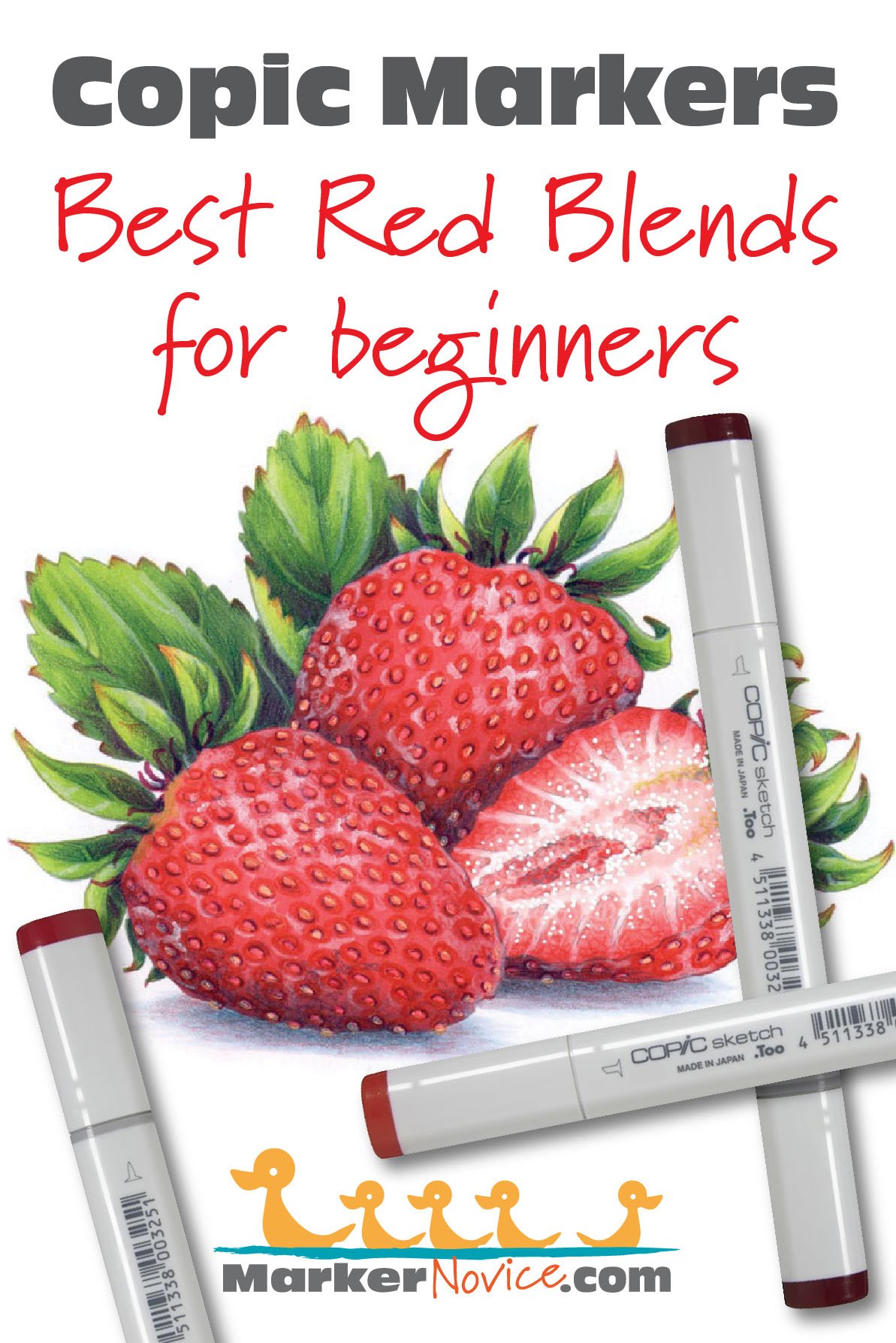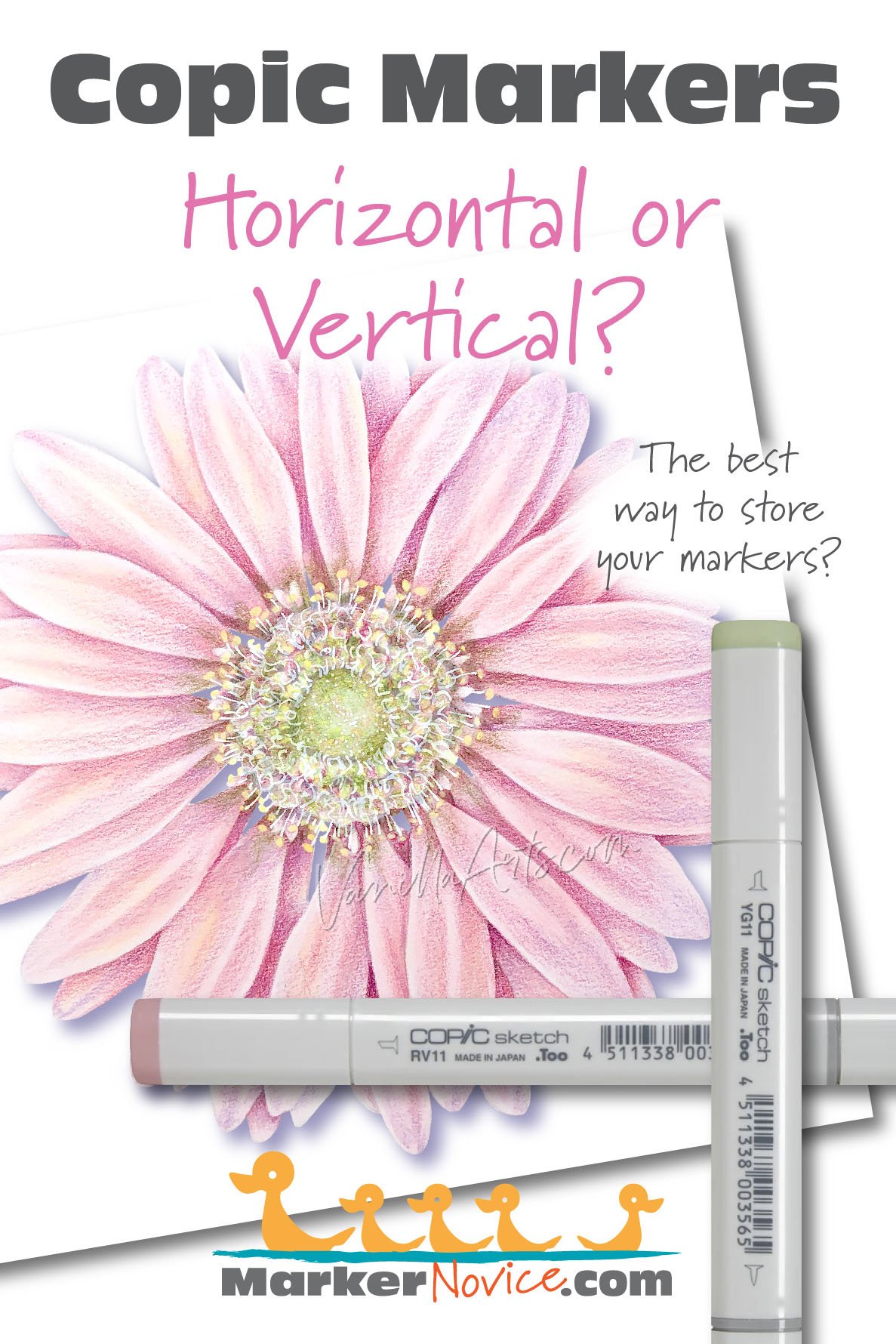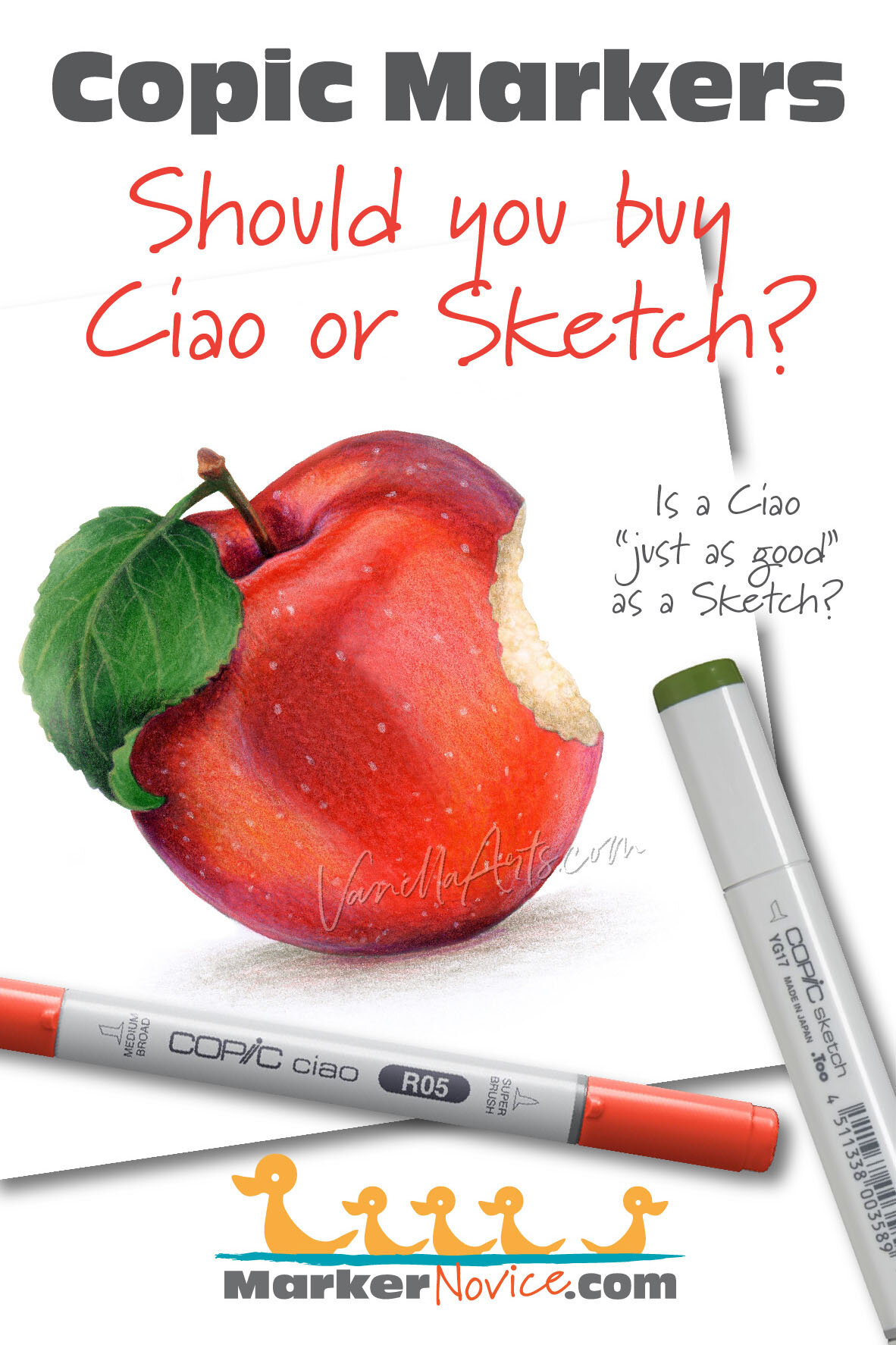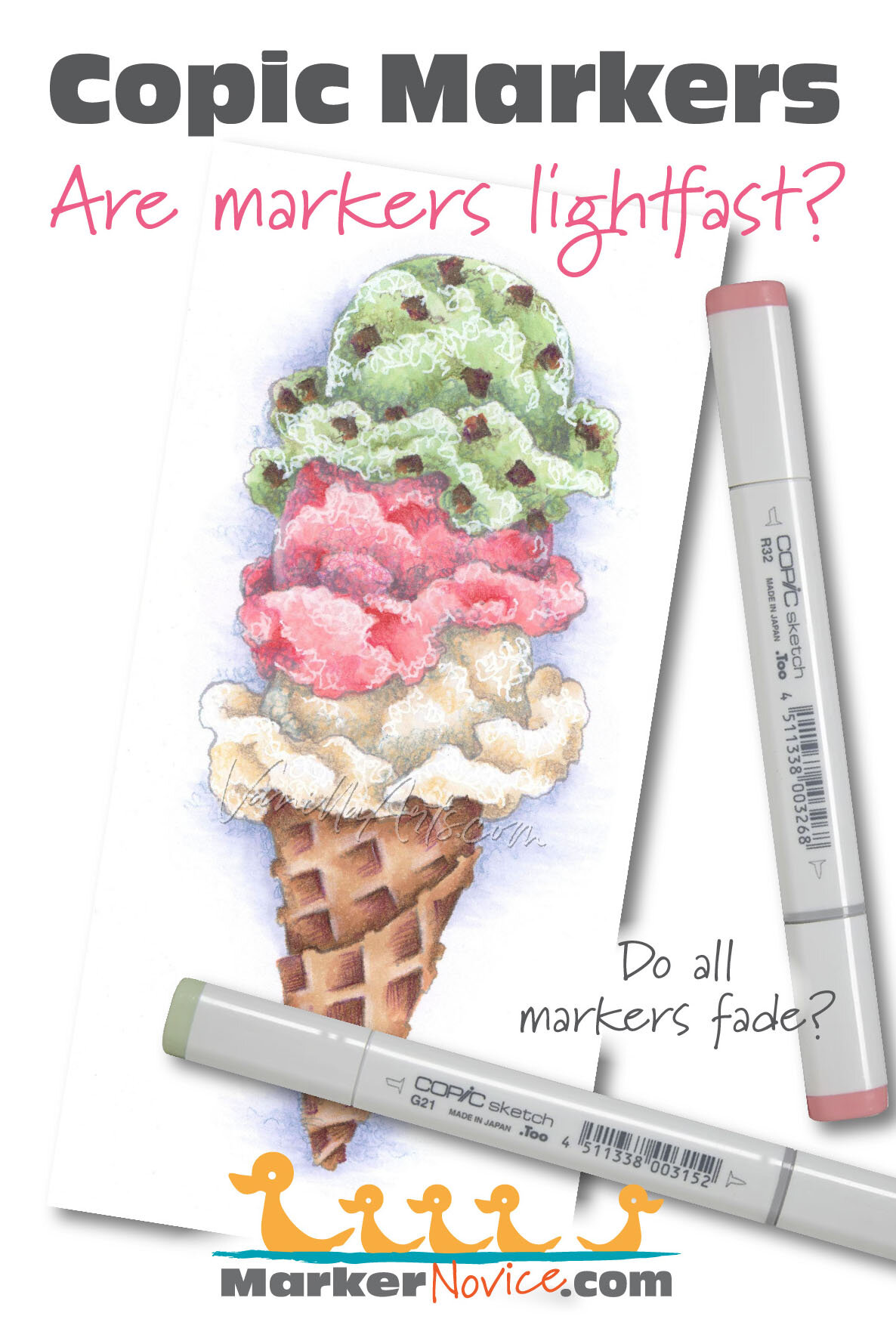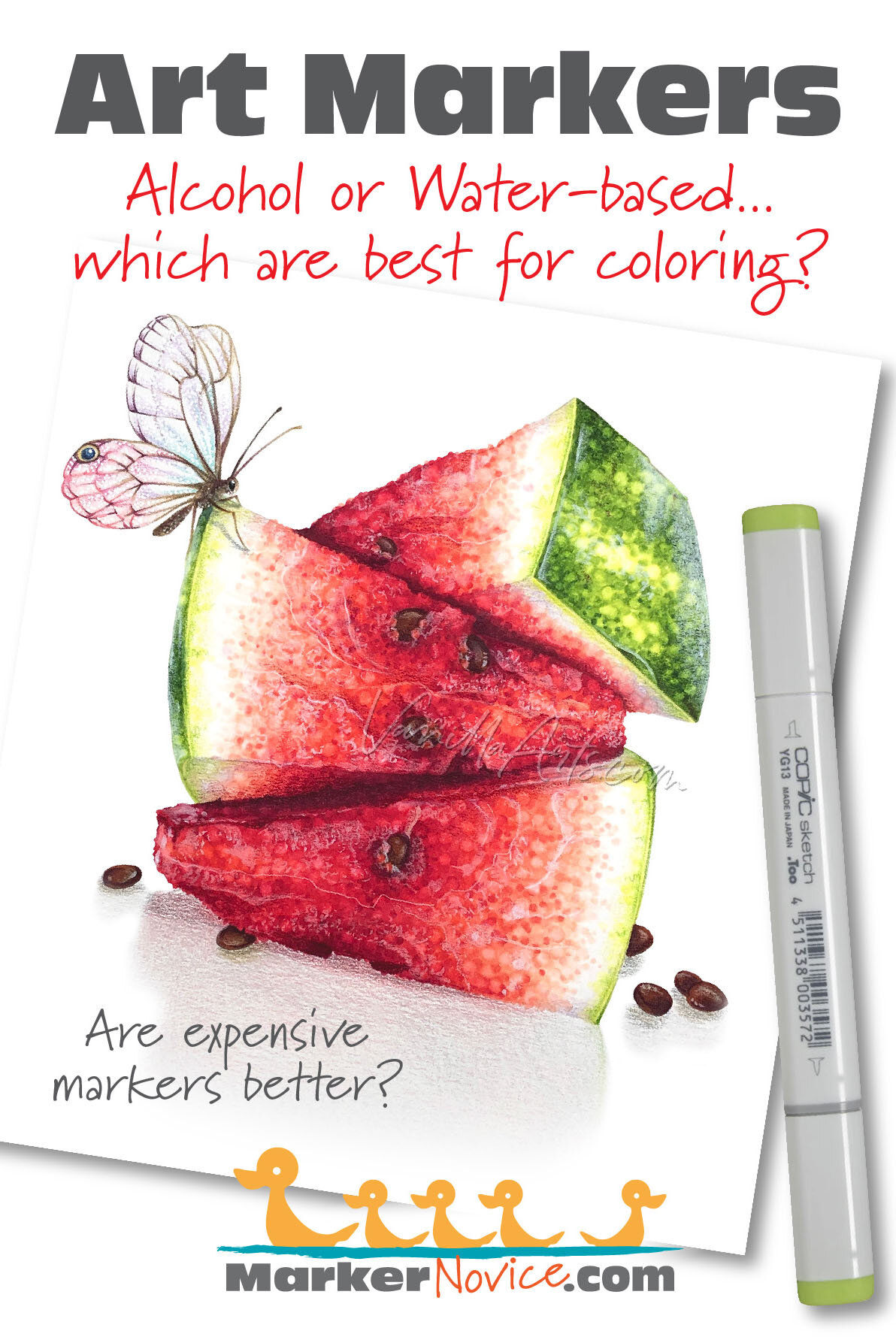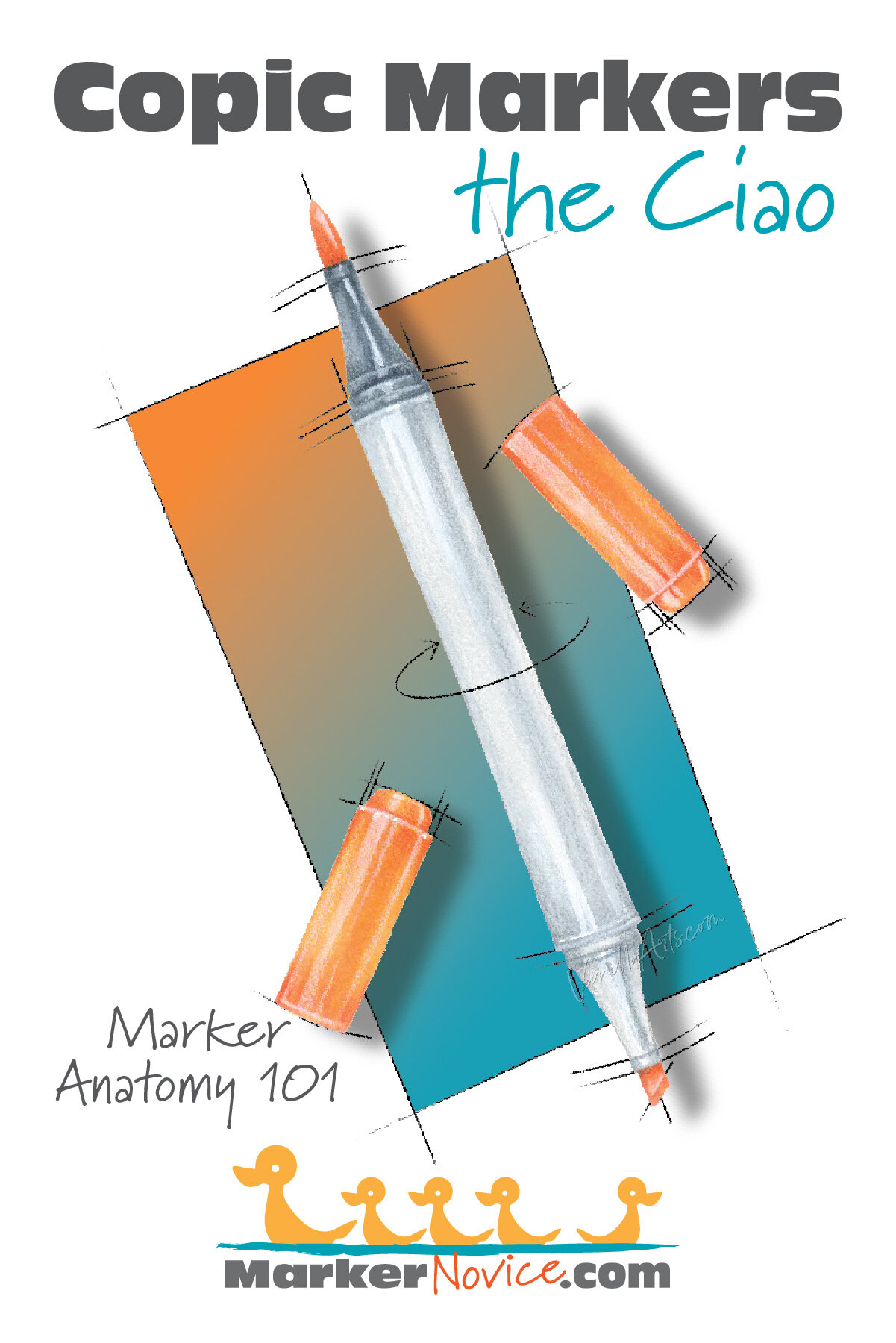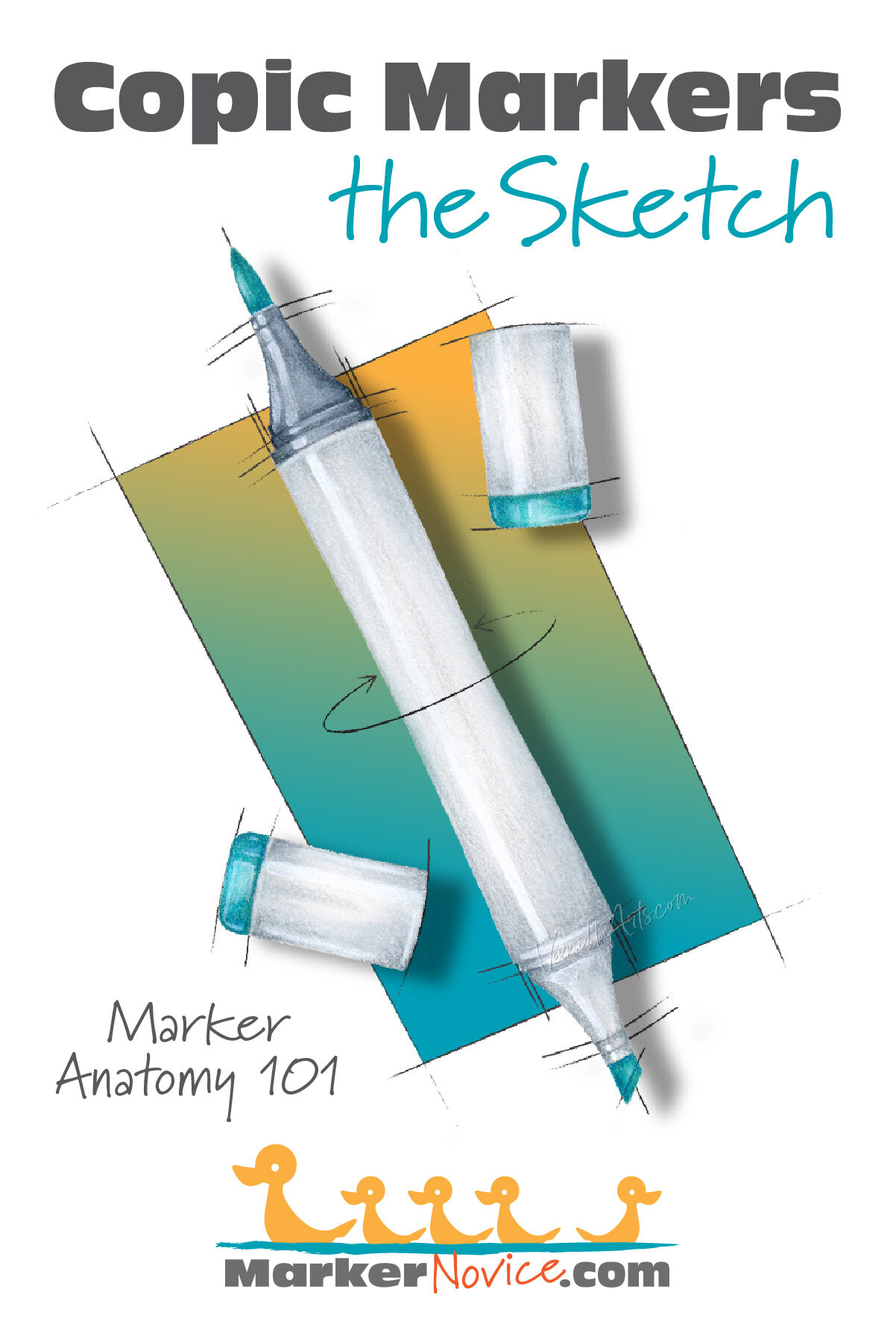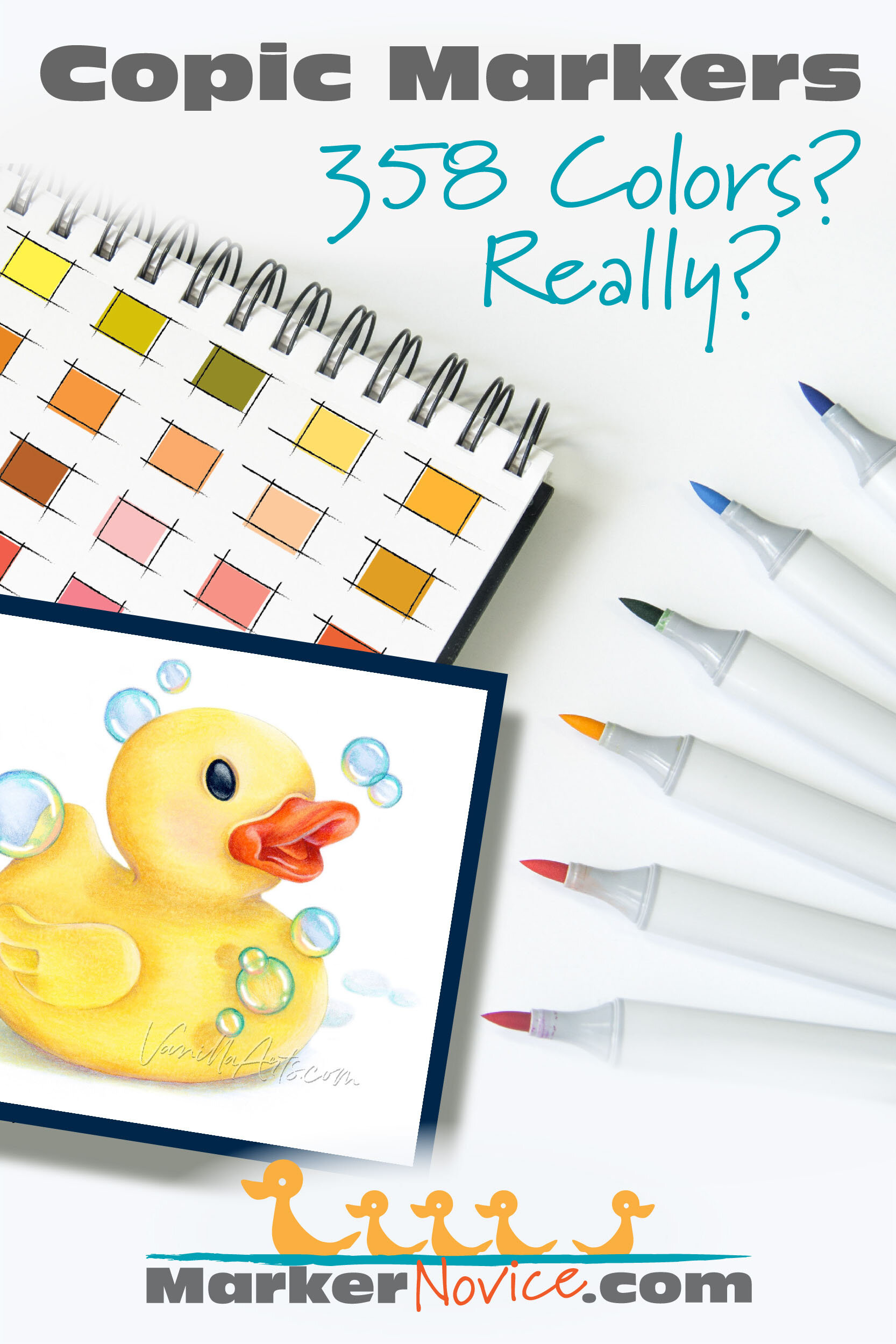What’s a Copic Classic Marker?
Getting ready to purchase your first Copic Markers?
It’s easy to be overwhelmed by all the choices— Sketch, Ciao, Classic, Wide? What’s the difference? Should you go cheap? Which nib is best?
Relax.
We’re here to help you understand which marker is best for you!
The Original Copic
Classic or Original Copic Markers are designed for drawing, with controlled ink flow and consistent line width. They feature a hard bullet nib and a chisel nib. The Classic is the most customizable of all Copics with alternative replacement nibs for calligraphy or fine lines.
Let’s look closer at why Classic Copics may or may not suit your coloring goals.
Classic Marker Overview
The Original Copic Marker was introduced in 1987 as a professional tool for Japanese designers (architecture, fashion, landscape, product, etc.). Comic artists worldwide soon started to prize the Copic as an exclusive and somewhat secretive marker.
The Too corporation made the markers easier for artists to track down (although they were scarce for a long time) and then developed several other styles. The original marker is still in use today and is now referred to as a Classic Copic.
You may hear them called a “Square Copic” in online communities.
Classics have a square shaped barrel which fits nicely into your hand. The edges are rounded, not sharp— if you’ve ever experienced the sharp corners of many competitor brands, you’ll understand how important a rounded edge is. They simply feel good in the hand.
The Classic is a noticeably oversized tool which offers comfort to those with hand arthritis, carpal tunnel syndrome, tight grips, or those who color for extended periods.
The flattened sides are supposed keep the Classic from rolling off your desk… although I’ve proven this theory wrong on more than one occasion.
Classic Copics are dual ended and come standard with a Fine (bullet) Nib and a Medium Broad (chisel) Nib. A gray band indicates the brush nib end.
The Classic is available in 214 colors, including a #0 colorless blender.
Classics are refillable (further details below).
The Classic Copic has the largest ink receptacle of all the Copic Markers. It holds more than the Sketch and significantly more than a Ciao. Combine the large receptacle with the Classic’s dryer nibs and you get a Copic that doesn’t need to be refilled as often as other markers.
FUN FACT? I purchased my first Copic Markers in 1992 as part of a secret artist’s overseas group purchase. We felt like spies. They were Classic Copics.
Who Are Classic Markers For?
You’ve seen Sketch and Ciao markers everywhere. They’re all over blogs and YouTube videos. Some of you may even be scratching your head right now:
“I didn’t even know there was a square barrel Copic!”
Frankly, I’m not surprised that so few people know about them.
Classics are the most mis-understood of all the Copic styles.
Classic Copics are the perfect drawing marker.
In fact, they’re the only true design marker Copic makes. They were created for sketching out designs, NOT FOR COLORING.
Classic nibs are control specialists. The nibs are ultra firm which means no matter how hard you press, you get a consistent and stable line weight. The nibs are purposefully on the dry side, allowing you to make precise marks that do not feather.
Pssstttt… May I point out that this is the exact opposite of what you need for coloring and blending?
Original Copics are a used for general purpose design work in commercial settings. They’re a standard drawing tool in design departments, used by architects, landscape design, product design, fashion design, commercial art and production, illustration and art direction. Classics are also favored by lettering artists (calligraphers may prefer the brush nibs but lettering designers are traditionally trained with bullet nibs and computers).
As marker users shifted from drawing to coloring, improvements to the Classic were needed. That’s where the Sketch Marker with its Super Brush Nib comes in. Brush nibs are juicier and cover larger areas smoothly, so they’re better suited to coloring. Classics are great markers, they’re just not great for coloring.
If you’re drawing and sketching, you want the Classic Copic.
And if you want a custom marker, the Classic is the marker for you.
WE ASKED! Only 2% of Vanilla Arts students use Classic Copics. Of those that do, most have upgraded the chisel nib to a brush nib.
Classic Copic Caps
Classic caps match the pale gray color of the marker body.
The ends of Classic caps feature plastic color indicators which are intended to match the ink color. A few cap colors are not exact matches but they’re close. A few color ends are translucent plastic but most are opaque; there is no obvious reason for the translucent plastic.
Classic colored cap ends are laser etched with the color number and name. (More on this in the next section.)
Classic caps are interchangeable from end to end. No need to keep them straight, they’re identical. Because the barrel is square, these are the easiest of all the Copic Markers to cap and uncap. They’re stupid-simple.
The caps nest which means you can store the cap on the opposite end while you color. I wish the Sketch caps would do this!
Classic caps feature a secure click lock which serves as a hepatic indication that you’ve closed the marker securely.
I recommend that you twist the caps to remove rather than pull straight off, to prevent ink splatter.
Classic Numbering + Identification
All Copics use the same numbering system and the same refill inks.
The Copic number is laser etched in dark gray on the body of a Sketch Marker along with brand details. The color name is not listed on the barrel, only the number. Symbols indicate the brush and chisel ends.
The etched lettering does not wear off.
The Copic number AND the color name are laser etched on the end of both caps.
Black etching on pale colors and white etching on dark colors.
Because the numbers and names are on the end of the cap, it’s easy to select Sketch markers from upright storage. This is a definite advantage over the Ciao and Wide marker styles which have no end-cap markings.
A thin, darker gray gap between the cap and the barrel indicates the bullet nib end. The gap on the chisel end is pale gray. The gaps are not true gaps
Customize your Classic: Nib Options
Copic makes nine different nibs for Classic Copics. This is not true of the other styles which have just the standard replacement parts but few customizable options.
Nibs do wear out and can get damaged but they’re easily replaceable.
WARNING: Dried, crusted, or hardened nibs can be replaced BUT the nib is not the only part damaged when a marker runs dry. The core inside the marker is made of a similar material and often hardens along with the nib. A nib can be replaced but you can not replace a core. A damaged core requires full marker replacement.
Professional Copic users upgrade their Classic Markers with custom nibs designed for the kind of work they do most.
Classic Standard Nib 1: Fine Nib
The Fine Nib is a firm bullet nib which provides maximum control, even ink flow, a fine line, and is perfect for small details.
This nib sits on the dark gray end of the Classic marker and can be replaced by several detail nibs (listed below).
Classic Standard Nib 2: Medium Broad Nib
Copic users almost always refer to this as the “chisel nib” and many colorers ignore this nib entirely.
Chisel nibs are an old-school drawing nib capable of 3 different line weights. Chisel nibs are not generous but they are extremely consistent in ink flow. Chisels are very firm and need to be broken in (softened a bit) before they give an even line with no skips or flow breaks.
The Chisel nib rests in the pale gray end of the marker and can be replaced by several larger nibs (listed below).
RECOMMENDATION: Colorers who want to blend should replace the chisel nib with a Classic Brush Nib (listed below).
Classic Replacement Nib Options (Light Gray End):
Super Fine Plastic - the thinnest line a Copic can make
Semi Broad - a small chisel nib, ideal for design drawing
3mm Calligraphy - a flat nib for traditional pen lettering.
Classic Replacement Nib Options (Dark Gray End):
Classic Brush - a brush style nib for Classics. Smaller and less juicy than a Super Brush nib but highly recommended if you want to blend with a Classic.
WARNING: Classic markers are not intended for blending. If your goal is to do marker blending techniques, please purchase either Sketch or Ciao markers. The Classic Brush Nib kinda blends but not nearly as well as the Super Brushes on Sketch and Ciao Markers. Classic Brushes are smaller, firmer, and less juicy, all three things make blending harder!
NOTE: It can be confusing to tell a Super Brush from a Classic Brush nib online. The Classic Brush is the only nib with a metal collar on it.
Soft Broad - similar to the standard chisel but softer for a more generous ink application
Classic Round - a large bullet nib for control and even weight lines
5mm Calligraphy - a larger flat calligraphic nib to complete the transformation of a Classic into a Copic Calligraphy Marker.
WARNING: Not all nibs fit on all Copics! Classic nibs are all thinner than Sketch or Ciao nibs. Please double check before you purchase.
BEST BUY? Consider purchasing a used Copic collection. Copics can last a lifetime. Well-kept Copics look and work like new!
Refill a Classic Marker
All Copics use the same numbering system and the same refill inks.
See the full Classic color palette at Copic’s official website here.
A factory-weight Copic Sketch Marker should measure about 20 grams (with both caps on).
I do not recommend filling to factory weight; this decreases the odds of Copic Volcanoes (see my article at VanillaArts.com about volcanoes.)
It is a myth that Copics can go for years without refilling. Because Classics tend to be stingier with ink flow than Sketch or Ciao styles, it’s especially important to keep your Classics near-to-full. A Classic marker simply won’t squeak or skip until they’re dangerously low on ink. By danger, I mean your dry Classic may be hardening inside and there’s no fix for this issue. You can kill a Classic by letting it get too low on ink.
Remember: Overfilling leads to marker leakage.
For accuracy, I recommend refilling by weight rather than the drip method. I find most drop recommendations to be wildly wrong. “10 to 12 drops” doesn’t tell you the size of the drop, how low the marker was to begin with, and in my tests, 10 drops doesn’t come close to restoring an ideal weight.
See my refilling recommendations at VanillaArts.com which includes a link to a great weight refilling tutorial.
CHECK FIRST! Beginners often mistakenly purchase Classics because they look similar to Sketch online. AVOID CLASSICS IF YOU WANT TO BLEND!
Personal Thoughts:
My first Copics were Classics and I used them for several years. When I moved from school to a professional design studio we used a mix of Classics, DeSign Markers, and Prismacolor Markers.
When I started painting with markers, I sold my Classics and gradually purchased Sketch Copics. They’re better for blending and large scale artwork.
I do not recommend Classics to colorers who want to blend.
This is because you must retro-fit a Classic for blending and even then, it’s still not as good as a Sketch or Ciao.
If you’re a card maker who only colors SMALL images, you can almost get away with Classics due to the size of your projects. But you can never work larger. Why buy a marker that limits your future options?
And there’s the trap. I mentioned before that many beginning colorers accidentally purchase Classics. Why?
Many beginners don’t realize there are alternative Copics. They assume everything is either Sketch or Ciao.
Classics look very similar to Sketch online. If you don’t know to look at the shape of the colored end-cap, it’s very easy to be fooled.
Classics are usually less expensive than Sketches. Sometimes beginners assume they’ve found a great sale.
Colorers sometimes read the description and get scared by the words SUPER BRUSH NIB. Let’s face it, the Super Brush looks gigantic! Meanwhile we all know about bullet nibs and they sound a lot easier. They don’t realize a bullet is wrong for blending.
I do not recommend Classic Copics for colorers because they lock you into expensive retrofitting OR a lifetime of dinky sized projects.
But if you’re sketching or drawing, you should be using a Classic!
And if you’re into Calligraphy? A customized Classic is WONDERFUL!
Amy Shulke is a professional technical illustrator who has used Copic Markers since 1990. She teaches artistic coloring classes online at VanillaArts.com and locally in south-eastern Michigan.
Marker Novice is Amy’s completely free resource devoted to beginner marker education. For intermediate/advanced artistic coloring articles, see her Studio Journal here.
Click to receive Marker Novice & Vanilla updates in your Pinterest feed





